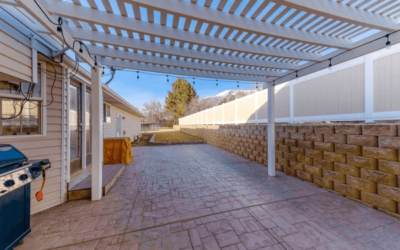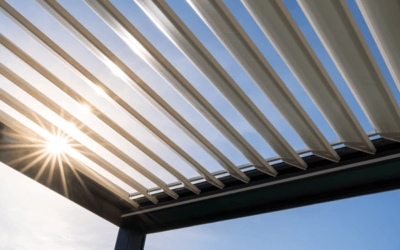Exploring the World of Wood Alternatives: Diversity and Innovation
In the realm of interior design, a growing trend is emerging: moving away from natural wood in favor of innovative alternatives. These substitutes are not only eco-friendly but also introduce a richness and creativity that can enhance indoor spaces in numerous ways.
Sustainability and Creativity in Decorative Materials
Sustainability stands at the forefront of the search for wood alternatives. Sustainable materials such as bamboo, straw, and various natural fibers are increasingly finding their way into interior decor. These options not only demonstrate a commitment to conserving natural resources but also infuse spaces with uniqueness and aesthetic appeal, thanks to their diverse textures and colors.
Technology and Synthetic Materials
Alongside natural options, technological advancements have paved the way for synthetic materials like polymers and resins that mimic the appearance and texture of wood. These materials offer advantages in durability and maintenance ease, while also providing a wide range of design possibilities that cater to both modern and traditional styles.
Revitalizing Recycled Wood
Innovation in wood alternatives doesn’t stop at new materials; it also encompasses the creative reuse of wood. Reclaimed timber from old buildings or discarded furniture can find new life in interior design projects. This practice not only conserves resources but also adds warmth and history to spaces, making each piece unique with its own story.
Sustainable Materials: A Revolution in Wood Alternatives
The building materials industry is continuously evolving in its quest for sustainable substitutes for wood, aiming to reduce the environmental impacts associated with natural wood use. These efforts have led to the development of a variety of new materials, offering designers and architects an array of choices.
Reclaimed Wood Panels
Reclaimed wood panels are an excellent option for those seeking sustainable alternatives. Sourced from diverse places like old structures or abandoned furniture, this wood is processed to create new panels. This process not only helps minimize waste but also provides high-quality materials with unique visuals.
Composite Materials
Composite materials, such as recycled plastics or pressed wood chips, are another popular alternative to wood. Requiring less maintenance than natural wood, these materials offer high resistance to rot and insects. Furthermore, they are well-suited to endure harsh weather conditions, making them ideal for outdoor applications.
Engineered Wood
Engineered wood, often referred to as composite wood, consists of wood fibers or shavings bonded with resins and other adhesives to produce various shapes and panels. This material offers a sturdy and versatile alternative suitable for a wide range of applications, from flooring to exterior siding. With its ability to imitate the look of natural wood, engineered wood also presents a cost-effective choice that reduces demand for natural resources.
Cutting-edge Technologies in Wood Alternatives
In today’s world, where there is an increasing need to conserve natural resources and pursue sustainable options, the development of alternative wood materials has seen remarkable advancements. These technologies provide diverse options that satisfy the desire for beautiful yet sustainable products.
Recycled Natural Fibers
One significant technique in creating wood alternatives involves the use of recycled natural fibers. These fibers are collected from varied sources such as recycled paper, coconut husks, and rice straw, then reformed into solid, durable materials that resemble wood in both appearance and properties. This approach not only helps reduce waste but also offers lightweight alternatives resilient to environmental factors.
Fiber-Reinforced Polymers
Fiber-reinforced polymers represent another advanced technology in this field, combining plastic with natural or synthetic fibers to produce a solid material with wood-like characteristics. These materials are notably water- and insect-resistant, making them ideal for outdoor use and humid environments. They also provide great design flexibility, easily shaped into various forms.
Wood-Plastic Composites
In the pursuit of advanced wood alternatives, wood-plastic composites have emerged as a favored option for many. These hybrids combine wood fibers and plastic, creating a material that marries the aesthetic of natural wood with the resilience of plastic. Their high resistance to wear and low maintenance requirements make them perfect for applications like decking, fencing, and outdoor furniture.
How to Choose the Right Wood Alternative for Your Project
Selecting the right wood alternative for your interior design project involves careful consideration of several factors, ensuring you choose the best option that meets both functional and aesthetic needs.
Define Purpose and Use
Start by evaluating the intended purpose for the alternative: is it for flooring, walls, furniture, or decorative accents? Understanding this will help narrow down your options. For instance, some materials may be better suited for flooring due to their high durability, while others may excel in decorative roles because of their attractive appearance.
Consider Material Properties
Choose a material that possesses the appropriate characteristics tailored to the space’s requirements, such as durability, ease of maintenance, and moisture resistance. If you’re seeking a wood alternative for areas prone to humidity, like kitchens or bathrooms, it’s vital to opt for a material that can withstand such conditions without damage.
Compatibility with Existing Décor
Ensure the alternative you select harmonizes well with your current home décor style. Some alternatives may lean toward a more modern or traditional look, so picking a material that complements the surrounding environment is essential. Pay attention to color, pattern, and texture during your decision-making process to guarantee cohesion with your home’s overall design.
By following these guidelines, you’ll be well-prepared to choose the right wood alternative that meets both the functional and aesthetic demands of your remodeling project.
Innovative Applications of Wood Alternatives in Interior Design
In the world of interior design, professionals are constantly exploring new and innovative materials that add a unique and sustainable touch to spaces. Wood alternatives offer a multitude of options that fulfill this need while providing practical and aesthetic solutions.
Utilizing Bamboo in Elegant Designs
Bamboo, known for its flexibility and strength, is a preferred wood alternative for interior designs. It can be employed in furniture, flooring, and even partition walls, infusing any space with a warm, natural texture. Its sustainability factor makes it an excellent choice for environmentally conscious consumers.
Corian as a Modern Surface Option
Corian, a type of solid surface material, is an outstanding choice for kitchen and bathroom countertops. Known for its heat and scratch resistance, it comes in a variety of colors and patterns to suit every taste. Additionally, its ease of cleaning and maintenance makes it a favorite among many designers.
Stone Veneer for Stunning Interior Facades
Stone veneer, an appealing alternative to wood, is increasingly used in interior décor to bring a touch of natural beauty to spaces. It can be applied for wall coverings or incorporated into furniture designs. With its wide range of colors and patterns, stone veneer offers limitless options for adding vibrancy and personality to any environment.



